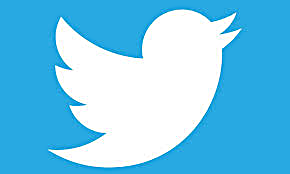The Grapes of Wrath at 75
 Monday, April 28, 2014 at 12:49AM
Monday, April 28, 2014 at 12:49AM  John Steinbeck published The Grapes of Wrath, his great American novel about the people of the Dust Bowl migration, in 1939, 75 years ago. It was controversial from day one. While 450,000 copies sold in the first year, critics called Steinbeck a Communist, and accused him of exaggerating or falsifying both the Joad family’s suffering and the cruelty of farmer owners, bankers and government. Kern County officials, where the Joad family ends up in the novel, banned the book from their libraries and schools. It was publicly burned in Bakersfield and in Steinbeck’s home town of Salinas.
John Steinbeck published The Grapes of Wrath, his great American novel about the people of the Dust Bowl migration, in 1939, 75 years ago. It was controversial from day one. While 450,000 copies sold in the first year, critics called Steinbeck a Communist, and accused him of exaggerating or falsifying both the Joad family’s suffering and the cruelty of farmer owners, bankers and government. Kern County officials, where the Joad family ends up in the novel, banned the book from their libraries and schools. It was publicly burned in Bakersfield and in Steinbeck’s home town of Salinas.
But it could not be silenced. President Franklin Roosevelt talked about the novel in a weekly Fireside Chat, and made the Joad family sound like real people, like the over half a million real people that did flee Oklahoma’s drought to California’s supposed paradise. First Lady Eleanor Roosevelt actually referred to the novel before her husband did (she often led the way) in her weekly column, My Day. After reading the book she went on a fact finding tour of the migrant camps and returned to tell both her husband and the Senate that the book was accurate.
“Yes,” she said, “it is coarse in spots, but life is coarse in spots. I know it to be true.”
Sounds so familiar. An environmental disaster caused in part by corporate greed and water wars. Thousands of people on the move. A polarized political climate, and a “blame the victim” mentality toward poverty. A president challenged by international military conflict trying to lift the victims of a disastrous economic crisis.
It’s good to be reminded that a book can make such a difference. Mercifully the Roosevelts were readers. As is Obama. I take some comfort in a literate President. Maybe it’s time for Obama to join in the Big Read, a program sponsored by our National Endowment for the Arts (our tax dollars at work!) that encourages communities to read the same book and reflect on it together.
Recently that Big Read was The Grapes of Wrath on the occasion of its 75th anniversary. The NEA provided great resources, including this program.
 Here’s just a bit of that transcript: a quotation from the novel and some comments. Better yet, read it again, especially if you, like me, only read it in high school. We read a lot of Steinbeck in high school here in the US, The Grapes of Wrath, Cannery Row, Of Mice and Men, The Pearl, The Red Pony. Great books all. But even better when read as an adult, a voter.
Here’s just a bit of that transcript: a quotation from the novel and some comments. Better yet, read it again, especially if you, like me, only read it in high school. We read a lot of Steinbeck in high school here in the US, The Grapes of Wrath, Cannery Row, Of Mice and Men, The Pearl, The Red Pony. Great books all. But even better when read as an adult, a voter.
And then suddenly the machines pushed them out and they swarmed on the highways. The movements changed them: the highways, the camps along the road, the fear of hunger and the hunger itself, changed them. The children without dinner changed them, the endless moving changed them. They were migrants. And the hostility changed them, welded them, united them – hostility that made the little towns group and arms as though to repel an invader, squads with pick handles, clerks and storekeepers with shotguns, guarding the world against their own people […]
The fields were fruitful, and starving men moved on the roads […] The great companies did not know that the line between hunger and anger is a thin line. And money that might have gone to wages went for gas, for guns, for agents and spies, for blacklists, for drilling. On the highways the people moved like ants and searched for work, for food. And the anger began to ferment.
From the NEA program:
Jay Parini: It’s a great American novel for many reasons. First of all, its subject is America at a moment of crisis. It’s a great epic of the American landscape.
Richard Rodriguez: It was never the story we expected. It was the story of people who did not quite make it in America. It’s about that story in America that gets repressed over and over again, the losers in America.
Susan Shillinglaw: That’s the book that speaks for the homelessness and the poverty and the suffering of so many people and that said it; it gave a voice to people suffering.
Susan Straight: It’s this huge American story about loss and violence and land and it’s always about family.
Thom Steinbeck: I think it has to do with grace and power under pressure. You don’t know what people are capable of until they’re put into the crucible of disaster.
Crisis, landscape, losers, suffering, family, grace and power. So American.
Copyright © 2014 Deborah Streeter













